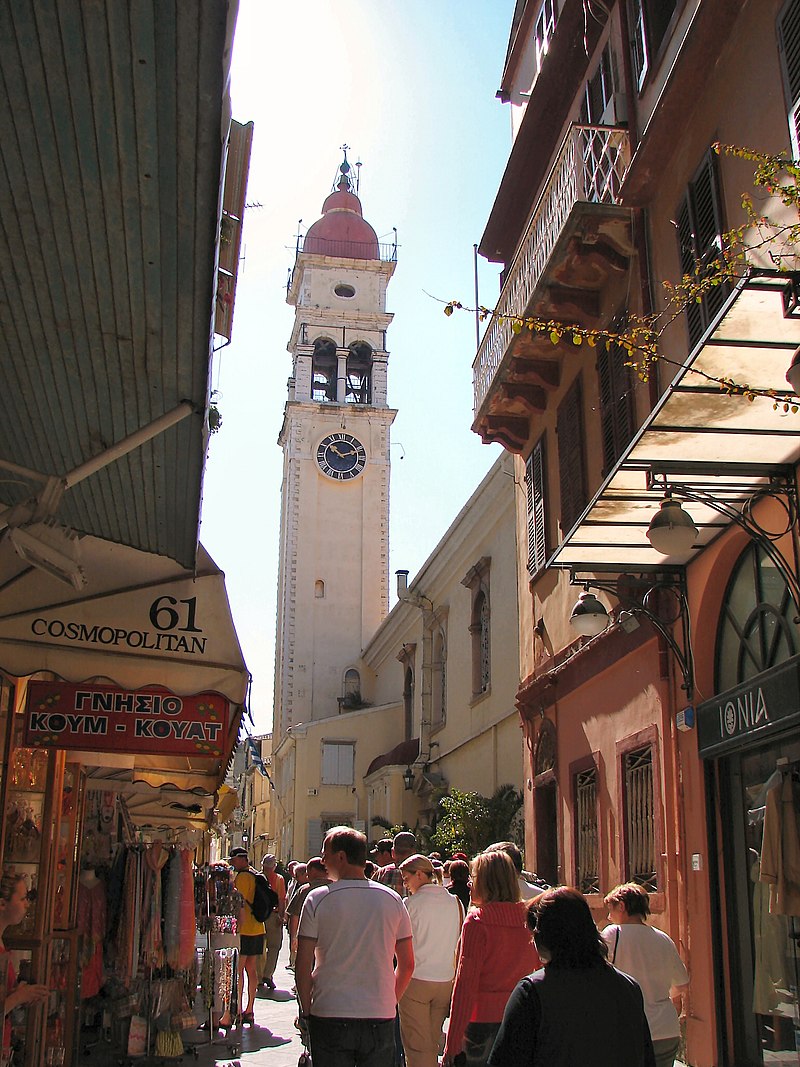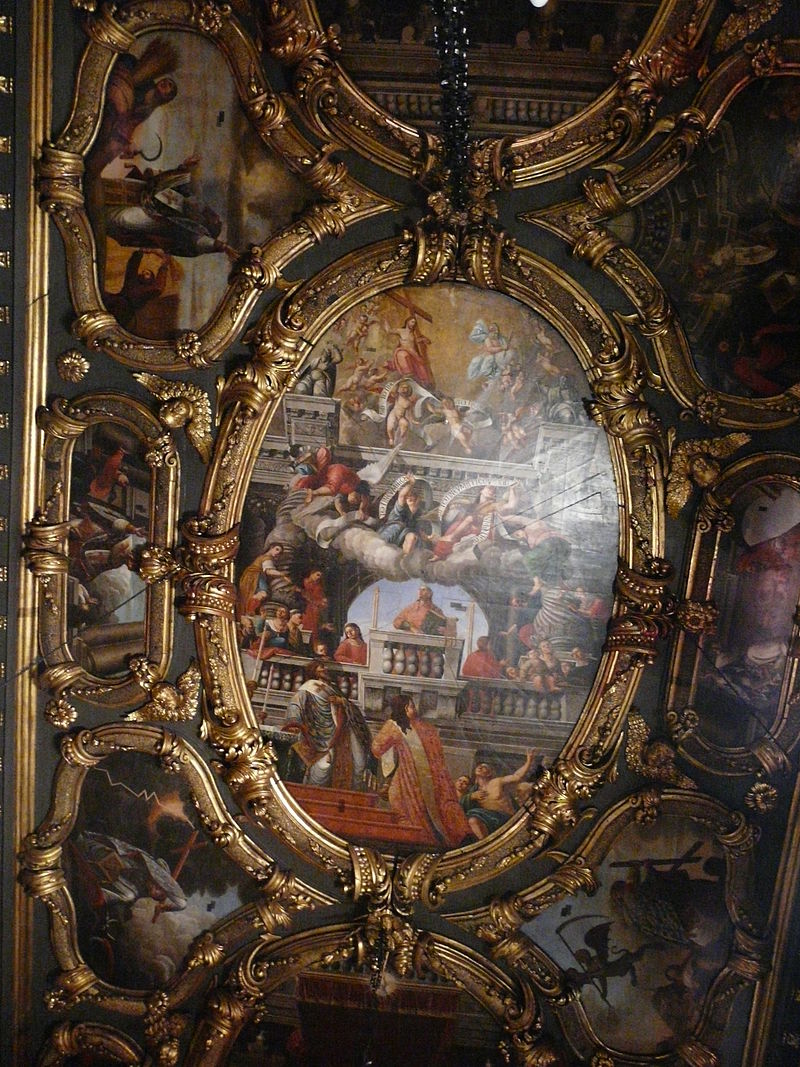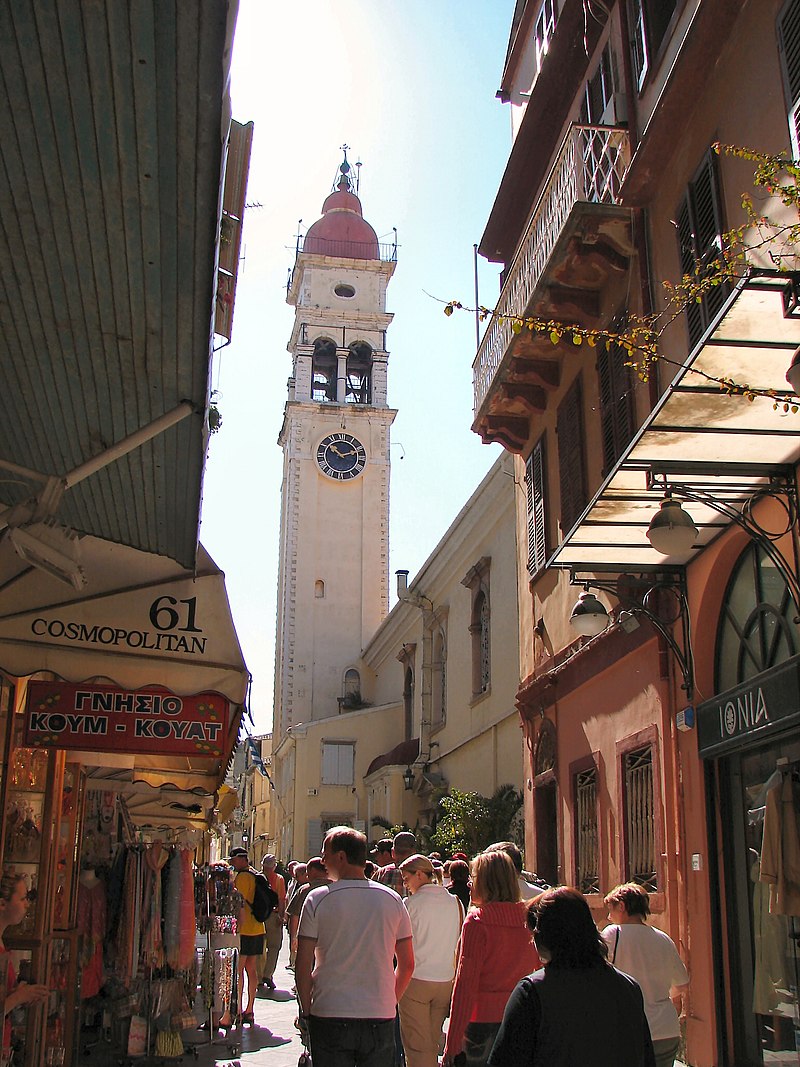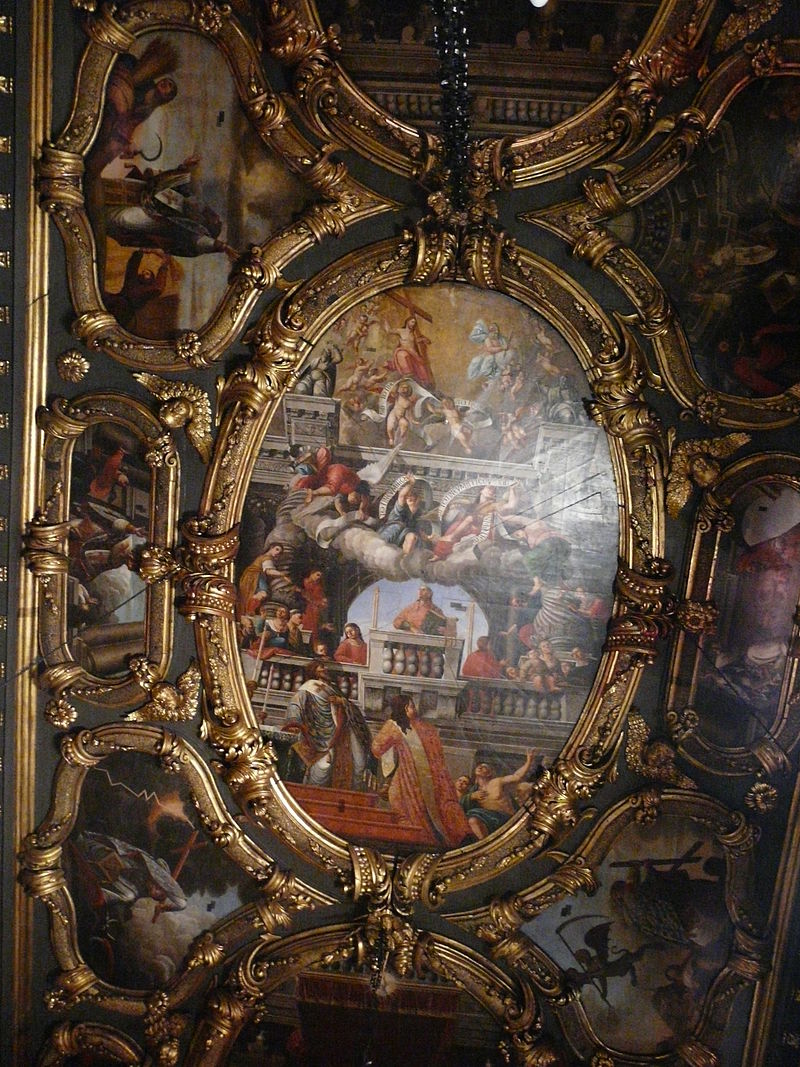
La Chiesa Di San Spiridione
La chiesa di San Spiridione, patrono dell’isola, si trova nel cuore della città vecchia di Corfù, perfettamente riconoscibile nello skyline cittadino per la sua alta torre, terminate in una cupoletta rossa, ispirata alla chiesa di San Giorgio a Venezia.
Fu costruita nel 1590, dopo che l’antico edificio di culto era stato demolito per ingrandire le mura di cinta della città.
L’esterno è estremamente sobrio, una semplice facciata con terminazione rettilinea, movimentata unicamente dall’apertura di finestre e di un portale.
All’interno presenta un impianto basilicale a una sola navata e un elaborato soffitto a cassettoni incorniciati in oro che racchiudono pitture raffiguranti scene di vita del Santo.
Sui fianchi laterali della chiesa si aprono due differenti ingressi per consentire l’afflusso dei pellegrini che giungono numerosi, in diverse occasioni liturgiche dell’anno, per visitare le reliquie di San Spiridione.
Questi, secondo la leggenda agiografica, era un pastore cipriota vissuto nel IV secolo, che dedicò la sua vita alla chiesa e compì numerosi miracoli.
Le sue spoglie, che si dice profumino di basilico, furono portate prima a Costantinopoli, quando Cipro fu invasa dai Saraceni e, nel 1453, a Corfù, dove si trovano ancora oggi, conservate in una ricca teca d’argento che viene portata in processione più volte l’anno: a dicembre, in occasione della festa patronale, durante la settimana santa e ad agosto, quando si celebra il salvataggio di Corfù del 1716 da un attacco dei Turchi, avvenuto, per i fedeli, grazie all’intercessione del Santo. Numerosi gli ex-voto presenti all’interno della chiesa, principalmente lampade in argento sbalzato.

Corfù, centro storico, campanile della chiesa di san Spiridione (By Jean-Luc 2005 – Own workOriginal text: selbst fotografiert, Copyrighted free use, https://commons.wikimedia.org/w/index.php?curid=64277686)

Corfù, chiesa di San Spiridione, interno, particolare del soffitto. (By Piotrus – Own work, CC BY-SA 3.0, https://commons.wikimedia.org/w/index.php?curid=12243367)

